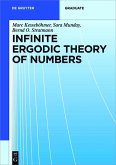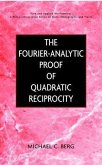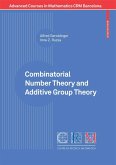By connecting dynamical systems and number theory, this graduate textbook on ergodic theory acts as an introduction to a highly active area of mathematics, where a variety of strands of research open up. The text explores various concepts in infinite ergodic theory, always using continued fractions and other number-theoretic dynamical systems as illustrative examples. Contents:PrefaceMathematical symbolsNumber-theoretical dynamical systemsBasic ergodic theoryRenewal theory and ¿-sum-level setsInfinite ergodic theoryApplications of infinite ergodic theoryBibliographyIndex
Dieser Download kann aus rechtlichen Gründen nur mit Rechnungsadresse in A, B, BG, CY, CZ, D, DK, EW, E, FIN, F, GR, HR, H, IRL, I, LT, L, LR, M, NL, PL, P, R, S, SLO, SK ausgeliefert werden.









